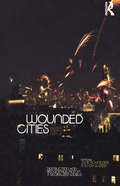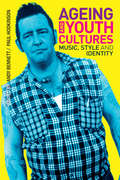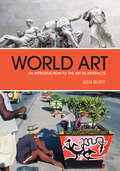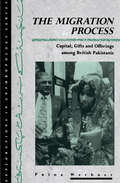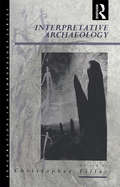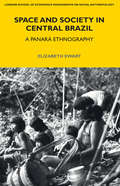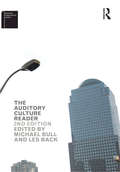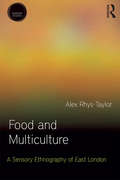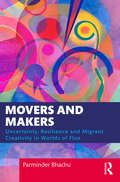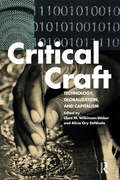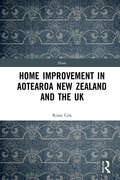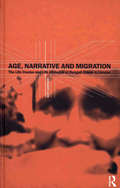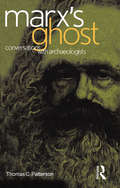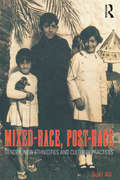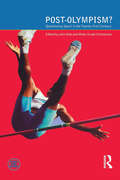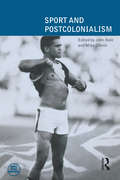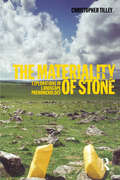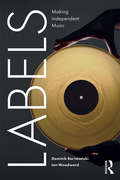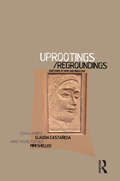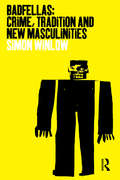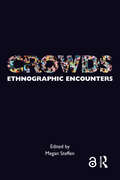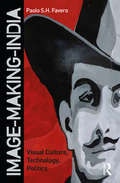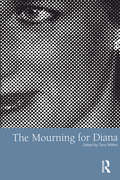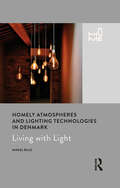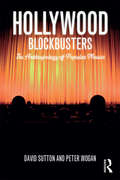- Table View
- List View
Wounded Cities: Destruction and Reconstruction in a Globalized World
by Jane SchneiderAlthough the seemingly apocalyptic scale of the World Trade Center disaster continues to haunt people across the globe, it is only the most recent example of a city tragically wounded. Cities are, in fact, perpetually caught up in cycles of degeneration and renewal. As with the WTC, from time to time these cycles are severely ruptured by a sudden, unpredictable event. In the wake of recent terrorist activities, this timely book explores how urban populations are affected by wounds inflicted through violence, civil wars, overbuilding, drug trafficking, and the collapse of infrastructures, as well as natural disasters such as earthquakes. Mexico City, New York, Beirut, Belfast, Bangkok and Baghdad are just a few examples of cities riddled with problems that undermine, on a daily basis, the quality of urban life. What does it mean for urban dwellers when the infrastructure of a city collapses transport, communication grids, heat, light, roads, water, and sanitation? What are the effects of foreign investment and huge construction projects on urban populations and how does this change the look and character of a city? How does drug trafficking intersect with class, race, and gender, and what impact does it have on vulnerable urban communities? How do political corruption and mafia networks distort the built environment? Drawing on in-depth case studies from across the globe, this book answers these intriguing questions through its rigorous consideration of changing global and national contexts, social movements, and corrosive urban events. Adopting a grass roots up approach, it places emphasis on peoples experiences of uneven development and inequality, their engagement with memory in the face of continual change, and the relevance of political activism to bettering their lives. It is especially attentive to the historical interaction of particular cities with wider political and economic forces, as these interactions have shaped local governance over time.
Ageing and Youth Cultures: Music, Style and Identity
by Paul Hodkinson Andy BennettWhat happens to punks, clubbers, goths, riot grrls, soulies, break-dancers and queer scene participants as they become older? For decades, research on spectacular 'youth cultures' has understood such groups as adolescent phenomena and assumed that involvement ceases with the onset of adulthood. In an age of increasingly complex life trajectories, Ageing and Youth Cultures is the first anthology to challenge such thinking by examining the lives of those who continue to participate into adulthood and middle-age. Showcasing a range of original research case studies from across the globe, the chapters explore how participants reconcile their continuing involvement with ageing bodies, older identities and adult responsibilities. Breaking new ground and establishing a new field of study, the book will be essential reading for students and scholars researching or studying questions of youth, fashion, popular music and identity across a wide range of disciplines.
World Art: An Introduction to the Art in Artefacts
by Ben BurtWhat do we mean by 'art'? As a category of objects, the concept belongs to a Western cultural tradition, originally European and now increasingly global, but how useful is it for understanding other traditions? To understand art as a universal human value, we need to look at how the concept was constructed in order to reconstruct it through an understanding of the wider world. Western art values have a pervasive influence upon non-Western cultures and upon Western attitudes to them. This innovative yet accessible new text explores the ways theories of art developed as Western knowledge of the world expanded through exploration and trade, conquest, colonisation and research into other cultures, present and past. It considers the issues arising from the historical relationships which brought diverse artistic traditions together under the influence of Western art values, looking at how art has been used by colonisers and colonised in the causes of collecting and commerce, cultural hegemony and autonomous identities.World Art questions conventional Western assumptions of art from an anthropological perspective which allows comparison between cultures. It treats art as a property of artefacts rather than a category of objects, reclaiming the idea of 'world art' from the 'art world'. This book is essential reading for all students on anthropology of art courses as well as students of museum studies and art history, based on a wide range of case studies and supported by learning features such as annotated further reading and chapter opening summaries.
The Migration Process: Capital, Gifts and Offerings among British Pakistanis (Explorations in Anthropology)
by Pnina WerbnerThis study, which breaks new ground in urban research, is a comprehensive and definitive account of one of the many communities of South Asians to emerge throughout the Western industrial world since the Second World War - the British Pakistanis in Manchester. This book examines the cultural dimensions of immigrant entrepreneurship and the formation of an ethnic enclave community, and explores the structure and theory of urban ritual and its place within the immigrant gift economy.
Interpretative Archaeology (Explorations in Anthropology)
by Christopher TilleyThis fascinating volume integrates recent developments in anthropological and sociological theory with a series of detailed studies of prehistoric material culture. The authors explore the manner in which semiotic, hermeneutic, Marxist, and post-structuralist approaches radically alter our understanding of the past, and provide a series of innovative studies of key areas of interest to archaeologists and anthropologists.
Space and Society in Central Brazil: A Panará Ethnography (LSE Monographs on Social Anthropology)
by Elizabeth EwartHailed once as ‘giants of the Amazon’, Panará people emerged onto a world stage in the early 1970s. What followed is a remarkable story of socio-demographic collapse, loss of territory, and subsequent recovery. Reduced to just 79 survivors in 1976, Panará people have gone on to recover and reclaim a part of their original lands in an extraordinary process of cultural and social revival. Space and Society in Central Brazil is a unique ethnographic account, in which analytical approaches to social organisation are brought into dialogue with Panará social categories and values as told in their own terms. Exploring concepts such as space, material goods, and ideas about enemies, this book examines how social categories transform in time and reveals the ways in which Panará people themselves produce their identities in constant dialogue with the forms of alterity that surround them. Clearly and accessibly written, this book will appeal to students, scholars and anyone interested in the complex lives and histories of indigenous Amazonian societies.
The Auditory Culture Reader (Sensory Formations)
by Michael BullThe first edition of The Auditory Culture Reader offered an introduction to both classical and recent work on auditory culture, laying the foundations for new academic research in sound studies. Today, interest and research on sound thrives across disciplines such as music, anthropology, geography, sociology and cultural studies as well as within the new interdisciplinary sphere of sound studies itself. This second edition reflects on the changes to the field since the first edition and offers a vast amount of new content, a user-friendly organization which highlights key themes and concepts, and a methodologies section which addresses practical questions for students setting out on auditory explorations. All essays are accessible to non-experts and encompass scholarship from leading figures in the field, discussing issues relating to sound and listening from the broadest set of interdisciplinary perspectives. Inspiring students and researchers attentive to sound in their work, newly-commissioned and classical excerpts bring urban research and ethnography alive with sensory case studies that open up a world beyond the visual. This book is core reading for all courses that cover the role of sound in culture, within sound studies, anthropology, sociology, cultural studies, history, media studies and urban geography.
Food and Multiculture: A Sensory Ethnography of East London (Sensory Studies)
by Alex Rhys-TaylorIn this book, Alex Rhys-Taylor offers a ground-breaking sensory ethnography of East London. Drawing on the multicultural context of London, one of the most cosmopolitan cities in the world, he explores concepts such as gentrification, class antagonism, new ethnicities and globalization. Rhys-Taylor shows how London is characterized by its rich history of socioeconomic change and multiculture, exploring how its smells and food are integral to understanding both its history and the reality of London’s urban present. From the fiery chillies sold by street grocers which are linked to years of cultural exchange, through ‘cuisines of origin’ like jellied eels to hybridized dishes such as the chicken katsu wrap, sensory experiences are key to understanding the complex cultural genealogies of the city and its social life.Each of the eight chapters combines micro histories of ingredients such as fried chicken, bush-meat and curry sauce, featuring narratives from individuals that provide a unique, engaging account of the evolution of taste and culture through time and space.With its innovative methodology, this is a highly original contribution to the fields of sensory studies, food studies, urban studies and cultural studies.
Movers and Makers: Uncertainty, Resilience and Migrant Creativity in Worlds of Flux
by Parminder BhachuWe live in times of extreme change. There could be no better time than now to interrogate the lives of new kinds of people, movers and makers, who navigate fragility and uncertainty to create with daring, often against great odds. Parminder Bhachu uses their dramatic life stories to uncover what makes for creativity and resilience in times of disequilibrium. What can be learnt from their creative moxie as innovators outside establishment powers? Why has their creative reach grown exponentially in our globally connected twenty-first century? How have their abilities to innovate been catalyzed without subscription to knowledge hierarchies and monopolies? These culturally dexterous movers who possess movement capital, advanced with every migration, have translated ancient maker and craft skills into transforming modern technology, science, design, architecture, and the arts. Generous, inclusive, and deeply collaborative, they are at the heart of open source sharing for collective intelligence, the common good, and the maker movement. They invigorate the economies they reside in greatly enhancing creative capacities and reach. Bhachu, herself a multiple-migrant maker, offers us a model for a hopeful way forward, bringing her unique ethnographic insights to illuminate what can be learnt about thriving in worlds of flux.
Critical Craft: Technology, Globalization, and Capitalism (Criminal Practice Ser.)
by Clare M. Wilkinson-Weber Alicia Ory DenicolaFrom Oaxacan wood carvings to dessert kitchens in provincial France, Critical Craft presents thirteen ethnographies which examine what defines and makes ‘craft’ in a wide variety of practices from around the world. Challenging the conventional understanding of craft as a survival, a revival, or something that resists capitalism, the book turns instead to the designers, DIY enthusiasts, traditional artisans, and technical programmers who consider their labor to be craft, in order to comprehend how they make sense of it. The authors’ ethnographic studies focus on the individuals and communities who claim a practice as their own, bypassing the question of craft survival to ask how and why activities termed craft are mobilized and reproduced. Moving beyond regional studies of heritage artisanship, the authors suggest that ideas of craft are by definition part of a larger cosmopolitan dialogue of power and identity. By paying careful attention to these sometimes conflicting voices, this collection shows that there is great flexibility in terms of which activities are labelled ‘craft’. In fact, there are many related ideas of craft and these shape distinct engagements with materials, people, and the economy. Case studies from countries including Mexico, Nigeria, India, Taiwan, the Philippines, and France draw together evidence based on linguistics, microsociology, and participant observation to explore the shifting terrain on which those engaged in craft are operating. What emerges is a fascinating picture which shows how claims about craft are an integral part of contemporary global change.
Home Improvement in Aotearoa New Zealand and the UK (Home)
by Rosie CoxThis book examines experiences of home improvement in the UK and Aotearoa New Zealand, providing valuable insight into the ways in which people make and maintain home in social, material and economic context. Drawing on in-depth interviews, examining both DIY projects and projects carried out by professional handymen, Rosie Cox explores how home improvement fits into wider social relationships and structures of inequality. Consideration is given to the importance of such work for gender and national identities, and how these identities are related to material contexts and the forms and fabric of homes. The book also highlights how home improvement can be a rewarding and valuable form of work, as well as an unrewarding and alienating endeavour. It will be of interest to scholars from a range of disciplines including anthropology, sociology and human geography.
Age, Narrative and Migration: The Life Course and Life Histories of Bengali Elders in London
by Katy GardnerWhilst the vast majority of recent research on identity and ethnicity amongst South Asians in Britain has focused upon younger people, this book deals with Bengali elders, the first generation of migrants from Sylhet, in Bangladesh. The book describes how many of these elders face the processes of ageing, sickness and finally death, in a country where they did not expect to stay and where they do not necessarily feel they belong. The ways in which they talk about and deal with this, and in particular, their ambivalence towards Britain and Bangladesh lies at the heart of the book. Centrally, the book is based around the men and womens life stories. In her analysis of these, Gardner shows how narratives play an important role in the formation of both collective and individual identity and are key domains for the articulation of gender and age. Underlying the stories that people tell, and sometimes hidden within their gaps and silences, are often other issues and concerns. Using particular idioms and narrative devices, the elders talk about the contradictions and disjunctions of transmigration, their relationship with and sometimes resistance to, the British State, and what they often present as the breakdown of traditional ways. In addition to this, the book shows that histories, stories and identity are not just narrated through words, but also through the body - an area rarely theorized in studies of migration.
Marx's Ghost: Conversations with Archaeologists
by Thomas C. PattersonHow did our current society come into being and how is it similar to as well as different from its predecessors? These key questions have transfixed archaeologists, anthropologists and historians for decades and strike at the very heart of intellectual debate across a wide range of disciplines. Yet scant attention has been given to the key thinkers and theoretical traditions that have shaped these debates and the conclusions to which they have given rise. This pioneering book explores the profound influence of one such thinker - Karl Marx - on the course of twentieth-century archaeology. Patterson reveals how Australian archaeologist V. Gordon Childe in the late 1920s was the first to synthesize discourses from archaeologists, sociologists, and Marxists to produce a corpus of provocative ideas. He analyzes how these ideas were received and rejected, and moves on to consider such important developments as the emergence of a new archaeology in the 1960s and an explicitly Marxist strand of archaeology in the 1970s. Specific attention is given to the discussion arenas of the 1990s, where archaeologists of differing theoretical perspectives debated issues of historic specificity, social transformation, and inter-regional interaction. How did the debates in the 1990s pave the way for historical archaeologists to investigate the interconnections of class, gender, ethnicity, and race? In what ways did archaeologists make use of Marxist concepts such as contradiction and exploitation, and how did they apply Marxist analytical categories to their work? How did varying theoretical groups critique one another and how did they overturn or build upon past generational theories?Marxs Ghost: Conversations with Archaeologists provides an accessible guide to the theoretical arguments that have influenced the development of Anglophone archaeology from the 1930s onwards. It will prove to be indispensable for archaeologists, historians, anthropologists, and social and cultural theor
Mixed-Race, Post-Race: Gender, New Ethnicities and Cultural Practices
by Suki AliSocial scientists claim that we now live in a post-race society, where race has been replaced by 'ethnicity'. Yet racism is endemic to British society and people often think in terms of black and white. With a marked rise in the number of children from mixed parentage, there is an urgent need to challenge simplistic understandings of 'race', nation and culture, and interrogate what it means to grow up in Britain and claim a 'mixed' identity. Focusing on mixed-race and inter-ethnic families, this book not only explores current understandings of 'race', but it shows, using innovative research techniques with children, how we come to read race. What influence do photographs and television have on childrens ideas about 'race'? How do children use memories and stories to talk about racial differences within their own families? How important is the home and domestic culture in achieving a sense of belonging? Ali also considers, through data gathered from teachers and parents, broader issues relating to the effectiveness of anti-racist and multicultural teaching in schools, and parental concerns over the social mobility and social acceptability of their children. Rigorously researched, this book is the first to combine childrens accounts on 'race' and identity with contemporary cultural theory. Using fascinating case studies, it fills a major gap in this area and provides an original approach to writing on race.
Post-Olympism: Questioning Sport in the Twenty-First Century (Global Sport Cultures Ser.)
by John BaleThe Olympic ideal and the Olympic Games stand as symbols of global cooperation, international understanding and the bonding of individuals through the medium of sports. However, throughout the twentieth century, Olympic rhetoric was often confronted by a different reality. The Games have regularly been faced by crises that have threatened the spirit of Olympism and even the Games themselves. Given the many changes that have occurred in the Olympic Games during the past century it seems reasonable to ask if this global event has a future and, if so, what form it might take. With this larger issue in mind, the authors of Post-Olympism? ask probing questions about the following: the infamous 1936 Olympics the effect of new technologies on the Games the future impact of the 2008 Beijing Games on China and of China on the Olympics the local and regional impact of the Sydney green Olympics the Games and globalization Disneyfication racism drug abuse The book provides a useful overview of the ongoing significance of the Olympics and will be essential reading for anyone with a serious interest in the Games.
Sport and Postcolonialism
by John BaleCompared with modes of representation such as literature, drama, poetry and dance, the world of sport has been largely neglected in postcolonial studies. At both local and global levels, however, sport has been profoundly affected by the colonial legacy. How are individual nations and different sporting cultures coping with this legacy? What does the end of colonialism mean within particular states and sports? How is postcolonialism linked with struggles of race and identity?Sport was a major tool of colonial power and postcolonialism manifests itself in the modern sporting world in several ways, including the huge number of world class athletes from former European empires and the exploitation of child-workers in postcolonial nations by the sporting goods industries. Many former colonial states place considerable importance on elite sport as a form of representation, yet a small number of such states oppose sport in its western form. This book explores the wealth of issues and experiences that comprise the postcolonial sporting world and questions whether sport can act as a form of resistance in postcolonial states and, if so, how such resistance might manifest itself in the rule-bound culture of sport.Its novel approach and topical focus makes this book essential reading for anyone interested in contemporary sports, postcolonialism, race and ethnic studies.
The Materiality of Stone: Explorations in Landscape Phenomenology
by Christopher TilleyWith Wayne Bennett From the silky wax qualities of the surfaces of some quartz menhirs to the wood-grain textures of others, to the golden honeycombed limestones of Malta, to the icy frozen waves of the Cambrian sandstone of south-east Sweden, this book investigates the sensuous material qualities of stone. Tactile sensations, sonorous qualities, colour, and visual impressions are all shown to play a vital part in our understanding of the power and significance of prehistoric monuments in relation to their landscapes. In The Materiality of Stone, Christopher Tilley presents a radically new way of analyzing the significance of both 'cultural' and 'natural' stone in prehistoric European landscapes. Tilley's groundbreaking approach is to interpret human experience in a multidimensional and sensuous human way, rather than through an abstract analytical gaze. The studies range widely from the menhirs of prehistoric Brittany to Maltese Neolithic temples to Bronze Age rock carvings and cairns in southern Sweden. Tilley leaves no stone unturned as he also considers how the internal spaces and landscape settings are interpreted in relation to artifacts, substances, and related places that were deeply meaningful to the people who inhabited them and remain no less evocative today. In its innovative approach to understanding human experience through the tangible rocks and stone of our past, The Materiality of Stone is both a major theoretical and substantive contribution to the field of material culture studies and the study of European prehistory.
Labels: Making Independent Music (Criminal Practice Ser.)
by Ian Woodward Dominik BartmanskiThe music industry is dominated today by three companies. Outside of it, thousands of small independent record labels have developed despite the fact that digitalization made record sales barely profitable. How can those outsiders not only survive, but thrive within mass music markets? What makes them meaningful, and to whom? Dominik Bartmanski and Ian Woodward show how labels act as taste-makers and scene-markers that not only curate music, but project cultural values which challenge the mainstream capitalist music industry. Focusing mostly on labels that entered independent electronic music after 2000, the authors reconstruct their aesthetics and ethics. The book draws on multiple interviews with labels such as Ostgut Ton in Berlin, Argot in Chicago, 100% Silk in Los Angeles, Ninja Tune in London, and Goma Gringa in Sao Paulo. Written by the authors of Vinyl, this book is essential reading for anyone with an interest in the contemporary recording industry, independent music, material culture, anthropology, sociology, and cultural studies.
Uprootings/Regroundings: Questions of Home and Migration
by Sara AhmedNew forms of transnational mobility and diasporic belonging have become emblematic of a supposed ‘global' condition of uprootedness. Yet much recent theorizing of our so-called ‘postmodern' life emphasizes movement and fluidity without interrogating who and what is ‘on the move'. This original and timely book examines the interdependence of mobility and belonging by considering how homes are formed in relationship to movement. It suggests that movement does not only happen when one leaves home, and that homes are not always fixed in a single location. Home and belonging may involve attachment and movement, fixation and loss, and the transgression and enforcement of boundaries. What is the relationship between leaving home and the imagining of home itself? And having left home, what might it mean to return? How can we re-think what it means to be grounded, or to stay put? Who moves and who stays? What interaction is there between those who stay and those who arrive and leave? Focusing on differences of race, gender, class and sexuality, the contributors reveal how the movements of bodies and communities are intrinsic to the making of homes, nations, identities and boundaries. They reflect on the different experiences of being at home, leaving home, and going home. They also explore ways in which attachment to place and locality can be secured - as well as challenged - through the movements that make up our dwelling places.Uprootings/Regroundings: Questions of Home and Migration is a groundbreaking exploration of the parallel and entwined meanings of home and migration. Contributors draw on feminist and postcolonial theory to explore topics including Irish, Palestinian, and indigenous attachments to ‘soils of significance'; the making of and trafficking across European borders; the female body as a symbol of home or nation; and the shifting grounds of ‘queer' migrations and ‘creole' identities.This innovative analysis will open up avenues of research an
Badfellas: Crime, Tradition and New Masculinities
by Simon WinlowFights, fraud and drugs racketeering regularly hit the headlines, but they are just news stories for most of us. For others, they constitute a way of life. This book uncovers a world where male identity is expressed each day through physical strength and power. Focusing on professional criminals and violent men, the author shows how workshop camaraderie, hard physical work and criminal reputations allow for changing masculinities. It is all too easy to stereotype criminals, when, in fact, their world is complex and creative. Criminal men adapt and modify their forms of gender expression to fit in with their changing economic, social and cultural circumstance, as do men in all walks of life. Why is violence attractive to these men? What motivates their crimes, both planned and impulsive? How do criminals themselves view their activities and their reputations, and how do these reputations affect their perception of masculinity? This book is the first sustained analysis of organized crime and violence to use covert research methods. Far from the sensationalized memoirs of retired gangsters, or the abstract discussions of scholars, this book builds on first-hand experiences and relationships made while working amongst bouncers and criminals. The social world of professional criminals and the working environments of criminal bouncers are demystified and laid bare. The author sets individual criminal careers and experiences in the wider context of de-industrialization and globalization, and provides a thoughtful and stimulating addition to the fields of anthropology, sociology and criminology.
Crowds: Ethnographic Encounters (Encounters: Experience and Anthropological Knowledge)
by Megan SteffenWhat exactly is a crowd? How do crowds differ from other large gatherings of people? And how do they transform emotions, politics, or faith? In Crowds, contributors draw on their experiences and expertise to reflect on their encounters with crowds. Each chapter examines a particular crowd or conception of crowdedness to provide an analysis of how, when, where—and with whom—crowds form in different contexts, as well as their purpose and the practical effect the experience has on both the participants and their environment. The wide selection of case studies ranges from the crowds that form every year during the Hajj, to New Year celebrations in China, commuters on the Delhi metro, public prayer in Nigeria, online mobs in Bangladesh, and the crowds that have emerged during protest movements in Thailand and Syria. Crowds makes a key contribution to establishing an anthropological theory of crowds and will be an essential read for both students and researchers.
Image-Making-India: Visual Culture, Technology, Politics
by Paolo Silvio FaveroImage-Making-India explores the evolving meaning of images in a digital landscape from the vantage point of contemporary India. Building upon long-term ethnographic research among image-makers in Delhi, Mumbai and other Indian cities, the author interrogates the dialogue between visual culture, technology and changing notions of political participation. The book explores selected artistic experiences in documentary and fiction film, photography, contemporary art and digital curation that have in common a desire to engage with images as tools for social intervention. These experiences reveal images’ capacity not only to narrate and represent but also to perform, do and affect. Particular attention is devoted to the 'digital', a critical landscape that offers an opportunity to re-examine the significance of images and visual culture in a rapidly changing India. This volume will be of particular interest to scholars of visual and digital anthropology and cultures as well as South Asian studies.
The Mourning for Diana
by Tony WalterThe unexpected death of Diana, Princess of Wales, in Paris on August 31st 1997 led to a period of mourning over the next week that took the world by surprise. Major institutions - the media, the royal family, the church, the police - for once had no pre-planned script. For the public, this was a story with an ending they had not anticipated. How did these institutions and the public create a cultural order in the face of such disorder? Both those involved in the mourning and those who objected to it struggled to understand the depth and breadth of emotion shaking Britain and the world. Mourning was focused on London, where Diana's body lay, and on Diana's home, Kensington Palace. Throughout the city and especially in Kensington Gardens, millions left shrines to the dead princess made of flowers, messages, teddy bears and other objects. In towns and villages around the UK, this was repeated. The mourning was also global, with media dominated by Diana's death in scores of countries. The funeral itself had a record-breaking world television audience, and messages of condolence floated around the globe in cyber-space. How unique was all this? Does it mark a shift in the culture of mourning, of the position of the monarchy, of the role of emotion in British culture? How does it compare with the mourning for other super-icons - JFK, Evita, Elvis, and Monroe? Was it media-induced hysteria? Or was it simply a magnification of normal mourning behaviour? Focusing on the extraordinary actions of millions of ordinary people, this book documents what happened and shows how a modern rational society coped with the unexpected in a proto-revolutionary week that left participants and objectors alike asking 'why did we behave like this?'
Homely Atmospheres and Lighting Technologies in Denmark: Living with Light (Home)
by Mikkel BilleUsing case studies, such as the use of candlelight and energy saving lightbulbs in Denmark, this book unravels light’s place at the heart of social life. In contrast to common perception of light as a technical and aesthetic phenomenon, Mikkel Bille argues that there is a cultural and social logic to lighting practices. By empirically investigating the social role of lighting in people's everyday lives, Mikkel Bille reveals how and why people visually shape their homes. Moving beyond the impact of its use, Bille also comments on the politics of lighting to examine how ideas of pollution and home act as barriers for technological fixes to curb energy demand. Attitudes to these issues are reflective of how human perceptions and practices are central to the efforts to cope with climate change. This ethnographic study is a must-read for students of anthropology, cultural studies, human geography, sociology and design.
Hollywood Blockbusters: The Anthropology of Popular Movies
by Peter Wogan David SuttonCertain Hollywood movies are now so deeply woven into the cultural fabric that lines of their dialogue - for example, 'Make him an offer he can't refuse' - have been incorporated into everyday discourse. The films explored in this book, which include The Godfather, Jaws, The Big Lebowski, Field of Dreams and The Village, have become important cultural myths, fascinating windows into the schisms, tensions, and problems of American culture. Hollywood Blockbusters: The Anthropology of Popular Movies uses anthropology to understand why these movies have such enduring appeal in this age of fragmented audiences and ever-faster spin cycles. Exploring key anthropological issues from ritual, kinship, gift giving and totemism to literacy, stereotypes, boundaries and warfare, this fascinating book uncovers new insights into the significance of modern film classics for students of Film, Media, Anthropology and American Cultural Studies.
